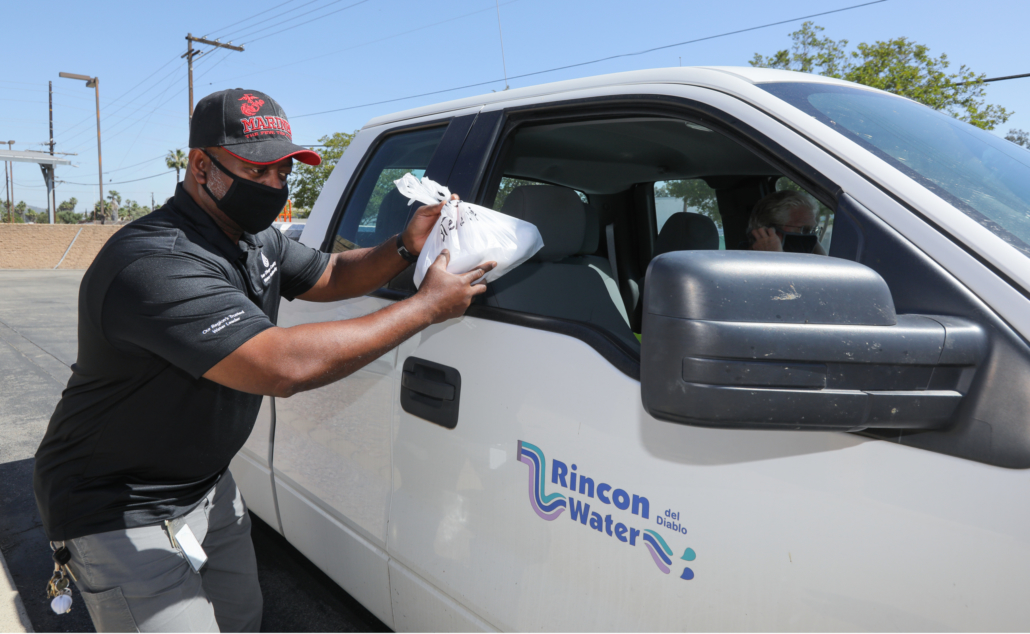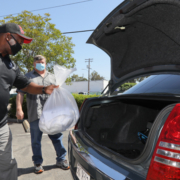The San Diego County Water Authority is distributing 25,000 cloth masks to water and wastewater agency employees in six Southern California counties as part of the national effort to ensure essential workers have enough protective gear during the COVID-19 pandemic.
The masks are available to public and private water and wastewater utilities in Mono, Inyo, San Bernardino, Riverside, San Diego and Imperial counties. Water Authority staff created a drive-through operation to maintain physical distancing while handing out the facemasks.
“It’s a tall order, but one that leverages our core values of collaboration and communication on behalf of our community,” said Water Authority General Manager Sandra L. Kerl. “It’s part of our duty as water and wastewater professionals to continue ensuring a clean, safe, and reliable water supply for our region – and beyond.”
Protecting employees during pandemic
In response to the coronavirus pandemic, the Water Authority and its 24 member agencies have increased regional coordination, and taken precautionary measures to protect employees. Public water supplies in the region remain safe to drink due to numerous robust treatment processes used by local and regional water providers.

San Diego County Water Authority Safety Officer Stephen Lee about to place a bag containing protective cloth masks in the front seat of the the Rincon del Diablo Municipal Water District truck as the District’s Steve Plyler waits in the driver’s seat. Photo: San Diego County Water Authority
Mask distribution
The mask distribution effort in San Diego County is part of a statewide distribution of 200,000 masks to water and wastewater industry staff. The masks are being dispersed nationwide to 16 different critical infrastructure sectors.
The masks were provided through a joint effort by FEMA, the U.S. EPA and the California Water & Wastewater Agency Response Network, or CalWARN, with assistance from the California-Nevada American Water Works Association and the California State Water Resources Control Board.
The EPA asked CalWARN to organize distribution of masks within the state. CalWARN asked the Water Authority to manage a distribution point. The distribution will continue until the masks are gone.
Water agencies are required to apply at CalWARN.org to receive the masks, free of charge. Once applications are approved, details regarding pickup dates, times, location, and quantity are sent to the applicants.





